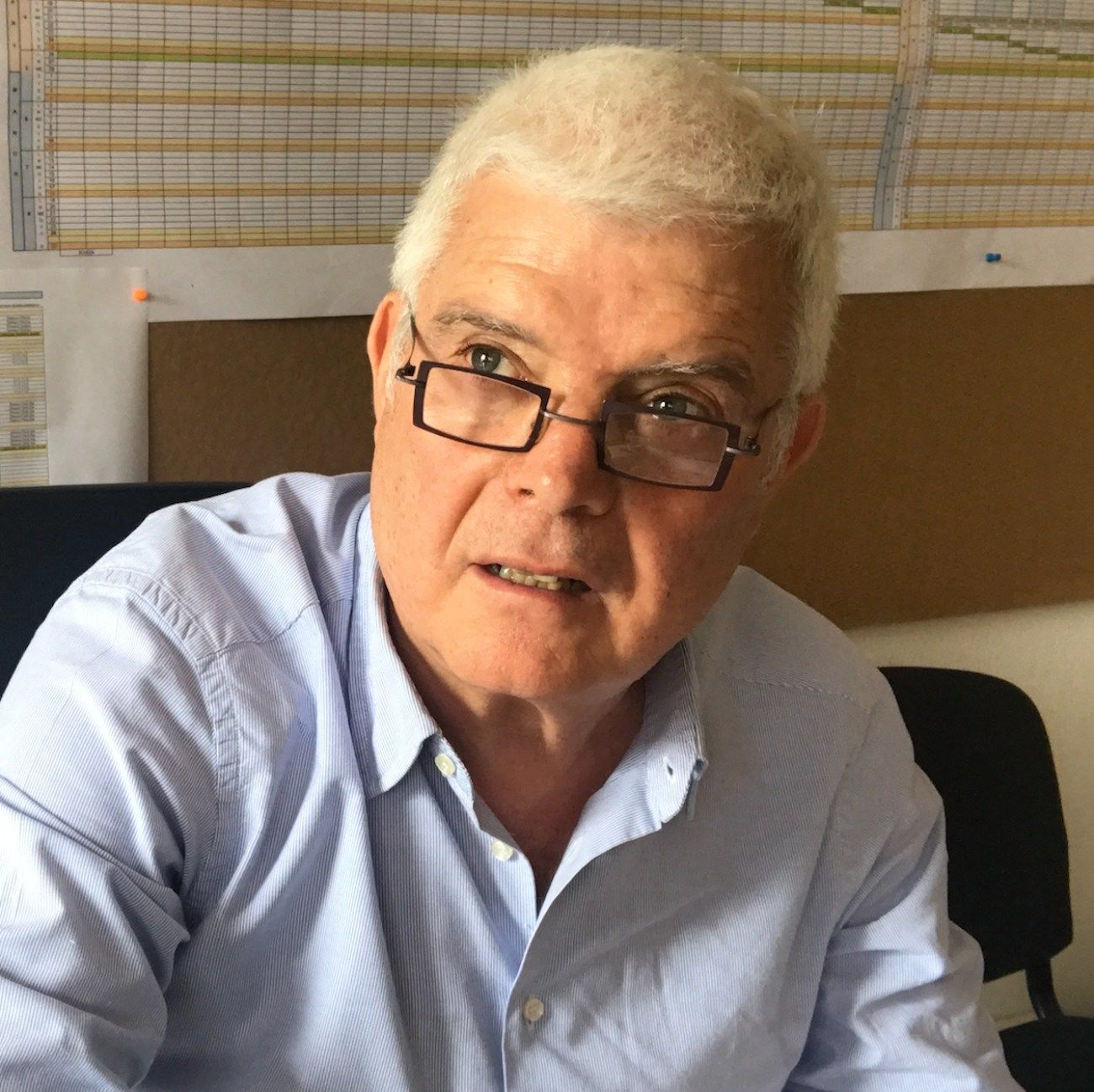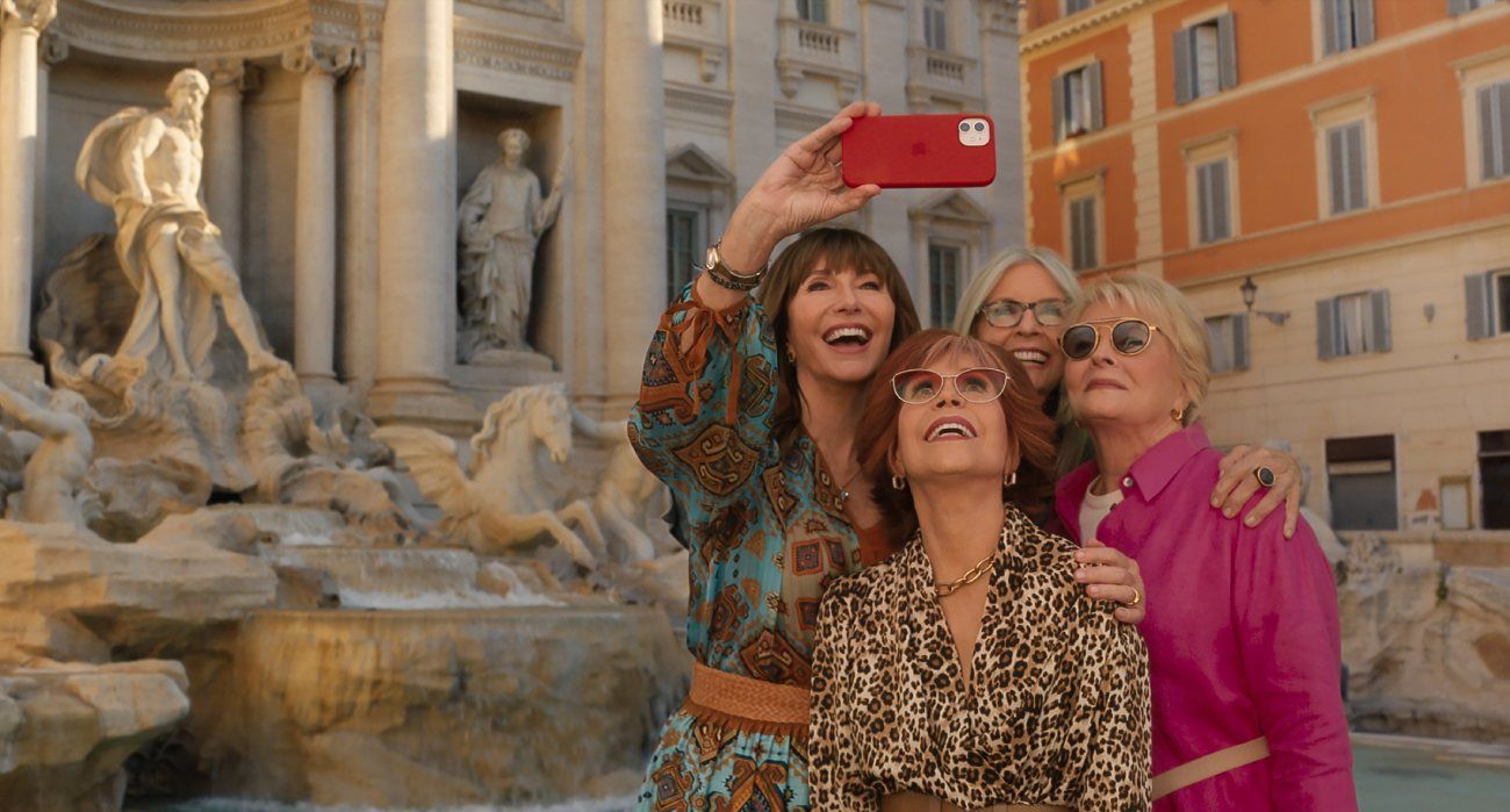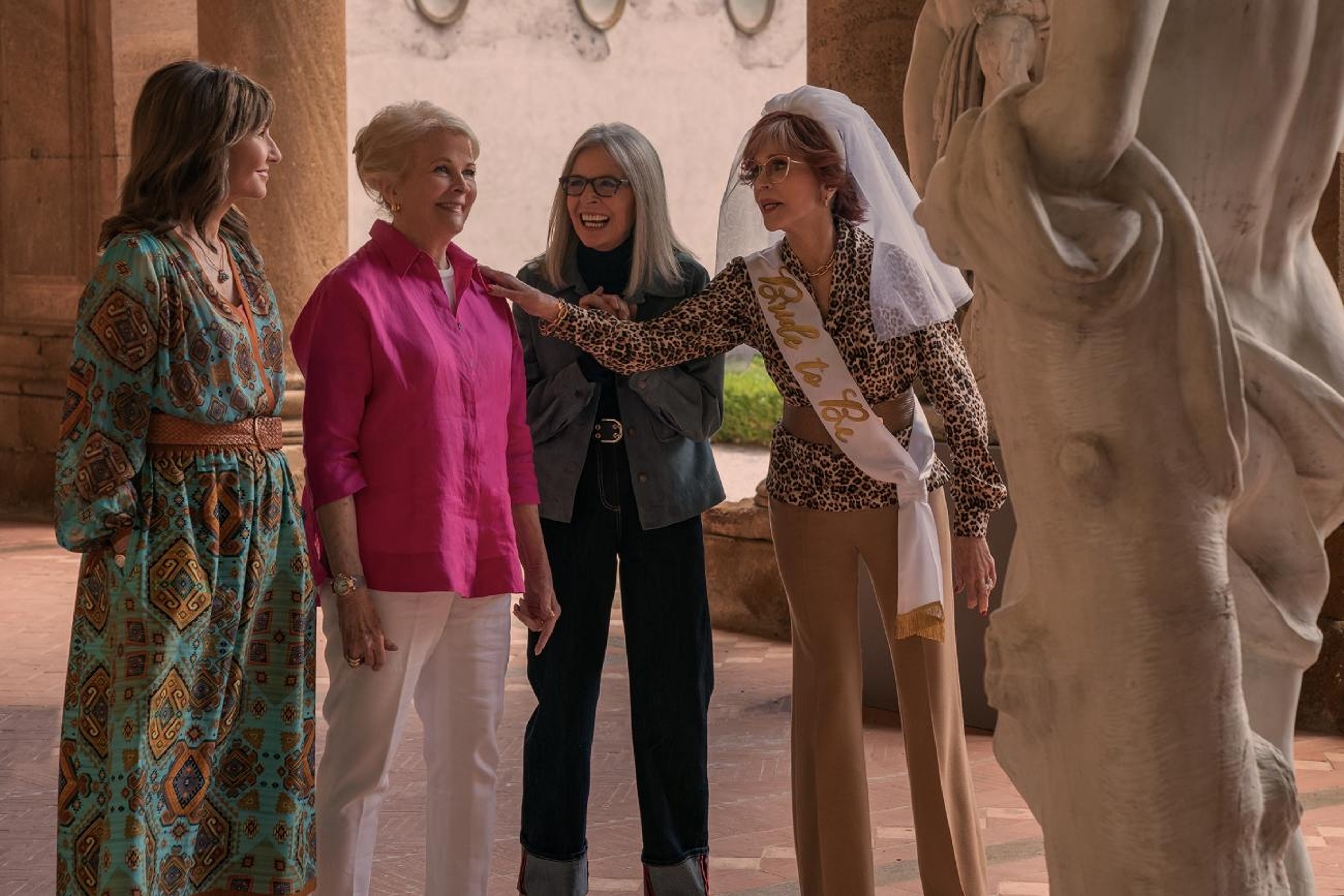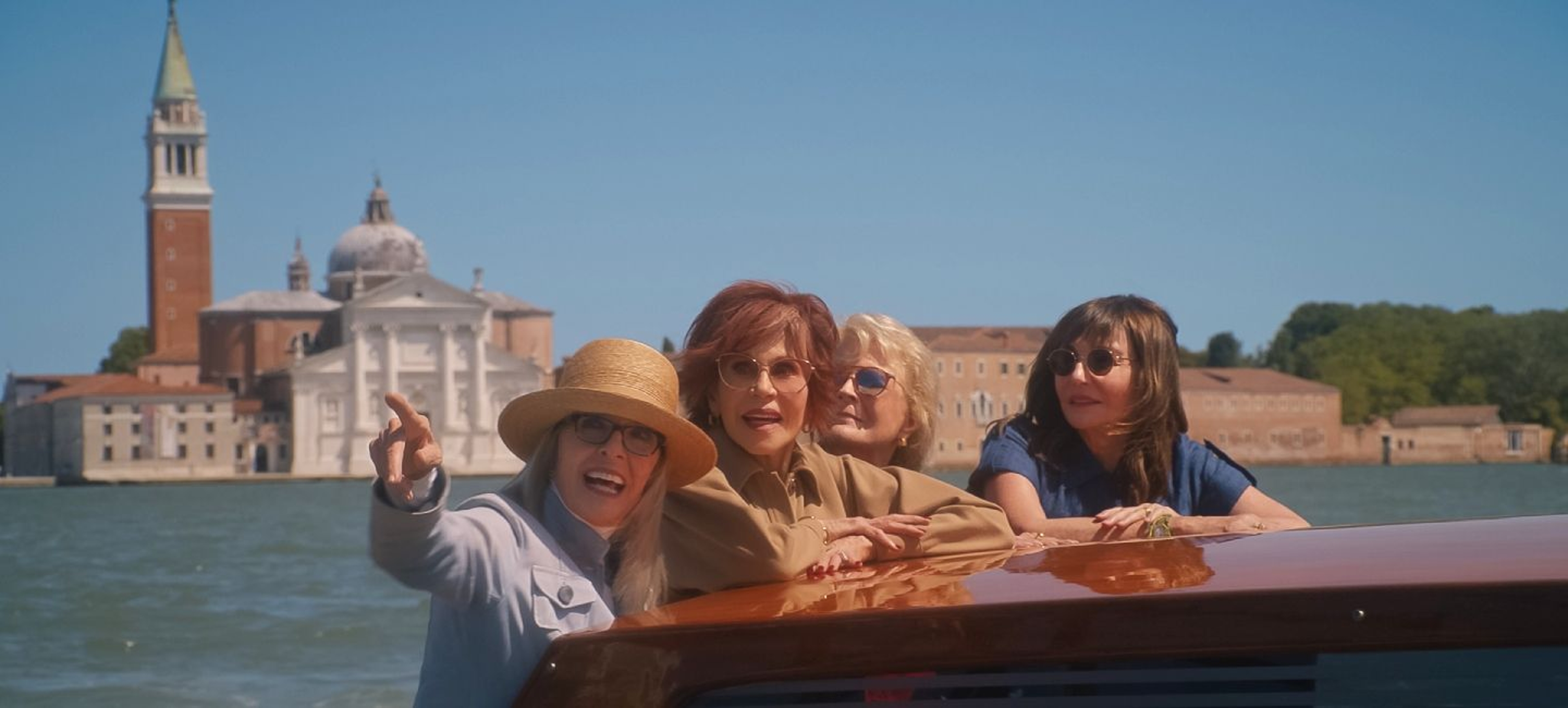When the creators of the original Book Club, Bill Holderman and Erin Simms, asked their four stars—Jane Fonda, Diane Keaton, Candice Bergen, and Mary Steenburgen—where they thought the sequel should be located, they got a quick response. “Candice and I looked at each other and in unison said, ‘Italy!’” Steenburgen remembers in the production notes.
Holderman and Simms wrote Book Club: The Next Chapter as an adventure that continued the saga of these four friends as they travel to Italy to celebrate the imminent wedding of Vivian (Fonda). The trip, which proves to be a hilarious bachelorette party and emotional bonding experience, also turns into a journey of self-discovery for each of the characters. To capture the charm and culture of Italy, the filmmakers reached out to production designer Stefano Maria Ortolani.
Having been born and raised in Rome, Ortolani knew the city and county inside out. In such Italian-based films as The Portrait of a Lady, Bright Star, and The Talented Mr. Ripley, Ortolani was able to help filmmakers craft a vision of Italy that best suited their stories. As the ladies move from Rome to Venice to Tuscany, they encounter a country that seems to perfectly reflect their own lust for life. The San Francisco Chronicle writes, “Through these women, we have the vicarious experience, not only of the sights of Italy but the psychological experience of being in a place that suddenly lends an air of enchantment to every interaction.”
We spoke to Ortolani about selecting locations in Rome, recreating a sublime Venetian garden, and helping capture “la dolce vita” of Italy.
The official trailer for Book Club: The Next Chapter

Production designer Stefano Maria Ortolani
As an Italian, was it important to find locations that best represent Italy?
Yes. I was born and grew up in Rome. I know the area quite well. In choosing locations, there was one thing that we agreed to early on. While we knew that we would show traditional postcard areas of Rome, we didn’t just want those locations. We wanted to get a different angle on Rome. Many of the scenes are set in the historic center of the city, but we also found lesser-known areas to shoot in. The result is a great advertisement for Italy and Rome in particular.
In the film you include the Colosseum, the Spanish Steps, the Trevi Fountain, and the Piazza della Rotonda. What other places did you use as locations?
Those sights are the places that everyone expects to see in a movie about Italy. But we went beyond those spots into the local alleys and streets around them. Not far from the Spanish Steps,there is the Piazza di Spagna, which is the huge square that was turned into a piazza during the Renaissance. We also explore the smaller streets, like Via dei Coronari, where they find the dress designer. When the characters stop in a café in Rome and decide to visit Venice, they are in an area that is an extension of Via dei Coronari, a piazza unknown to most people.

Mary Steenburgen, Jane Fonda, Diane Keaton, and Candice Bergen in front of the Trevi Fountain in Book Club: The Next Chapter
You also shot at the Castello della Castelluccia, which is a medieval site just north of Rome.
It’s a beautiful castle with a famous tower. In fact, the tower is older than the building itself, which has been rebuilt. We used it for the location of the Tuscan estate. When we were looking for a building that would feel like Tuscany, I knew this place would be perfect. All the cypress trees around the estate are typical of Tuscany. And the fields next to the castle remind me a lot of Tuscany. We joke that when the Tuscans need to film a movie set in Tuscany, they come to Rome.
The Tuscan estate was really a combination of different locations. We shot the exterior and the wedding there at Castello della Castelluccia. We shot the interiors at Villa Taverna Parisi, which is southwest of Rome. We mixed locations a lot. We had the characters looking at the Roman Forum as if they were in the Musei Capitolini, which is right next to the Forum. But we recreated the Musei in another Villa, and we used castings of real statues from the Musei to fill the villa. We hired a man who is specifically authorized to cast the official copies from the actual statues.
What was it like to shoot so many locations in your hometown?
It was one of the best times that I had working on a movie. We had a great relationship with Bill and Erin. The movie was really fun to work on because of the collaboration between everyone.
How did you create that restaurant with a garden in Venice?
That garden/restaurant was built on a stage. We only had so many nights to shoot in Venice, so in order to shoot 12-hour days, we needed a set location.
Did you base it on actual Venetian locations?
There are many gardens in Venice, which are mostly public and quite narrow. They are beautiful but too small. We wanted to have a larger area to shoot in, to have a more articulated space in which the director can get different takes. To set it in Venice, we put up a blue screen on one side so we could recreate the Grand Canal with CGI. We also shot the restaurant’s kitchen on a stage.
How did you make the space feel like Venice?
Around the garden, there are different structures that include elements of Venice. All of the architectural references are original to Venice. They are reproductions of real Venetian places. And there are bits and pieces taken from different places in Venice. The mixing of different elements is characteristic of Venice. Venice is filled with overlaps of different periods and styles, areas that are constantly being rebuilt partially because of the water. The unit production manager, who was from Venice, was astonished by how believable the garden restaurant was.

Mary Steenburgen, Candice Bergen, Diane Keaton, and Jane Fonda in Book Club: The Next Chapter
Were there places you couldn't shoot that you wanted to?
The train station in the film is not the actual train station in Rome. It is a different place that we turned into a station. There were security issues with shooting in the actual station. Likewise with the airport, the authorities let us shoot there but we had to shoot outside the actual airport. We could only shoot along one part of the entrance to the airport. But that is the way with every movie. You have to cope with the reality of these limitations and be ready to adjust your locations.
You have worked on a lot of films set in Italy. What did you want the Italy of Book Club: The Next Chapter to express?
This is a comedy about these women who are coming out of the lockdown. They want to return to life and breath again, like everyone else in the world. People don't want to stay at home anymore. We wanted to express the happiness these women experience in getting their lives back. The Italy in the film captures the beauty of the world they want to experience.
I did another movie, Jane Campion’s The Portrait of a Lady, in Rome a while ago. There was a very different atmosphere and sensibility of Rome in that movie. The story was very much about suffering so the city in the film felt dark and unhappy. That is not the same Rome you see in Book Club: The Next Chapter.
What would you like people to take away from the film?
I hope they come out from watching the movie happy and laughing. There are so many problems in the world. It is wonderful to spend two hours relaxing in such a beautiful place.
This interview has been edited and condensed for clarity.
